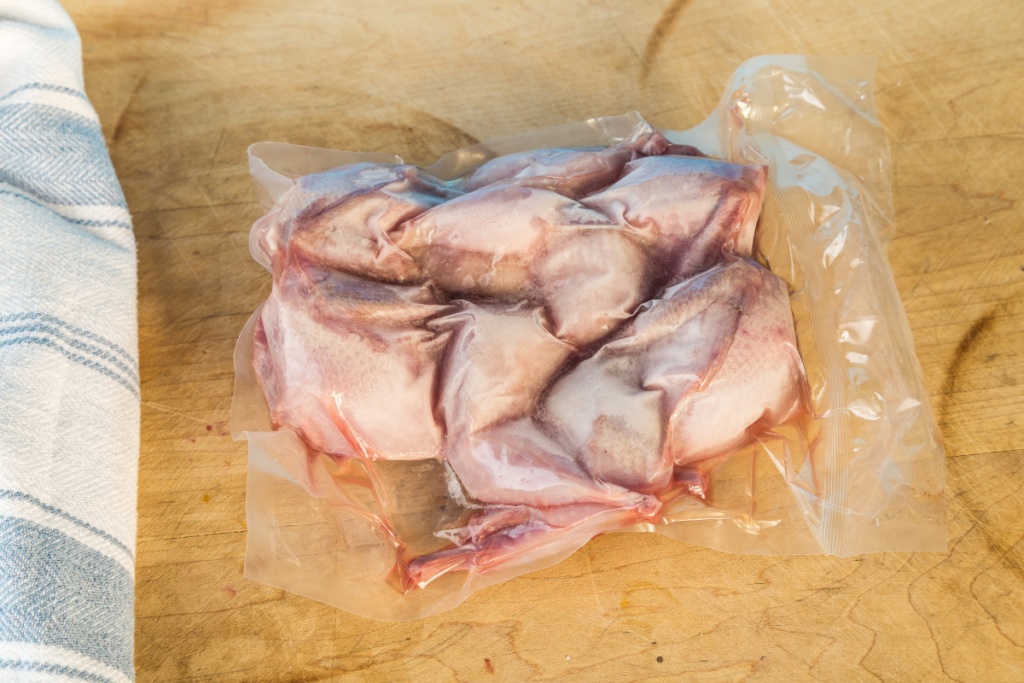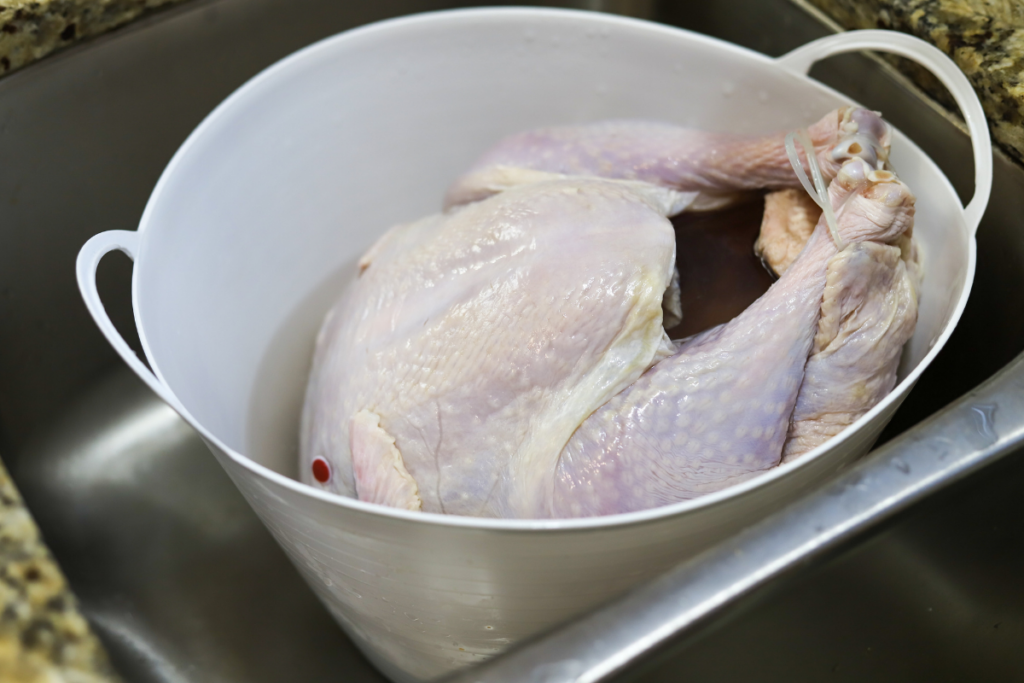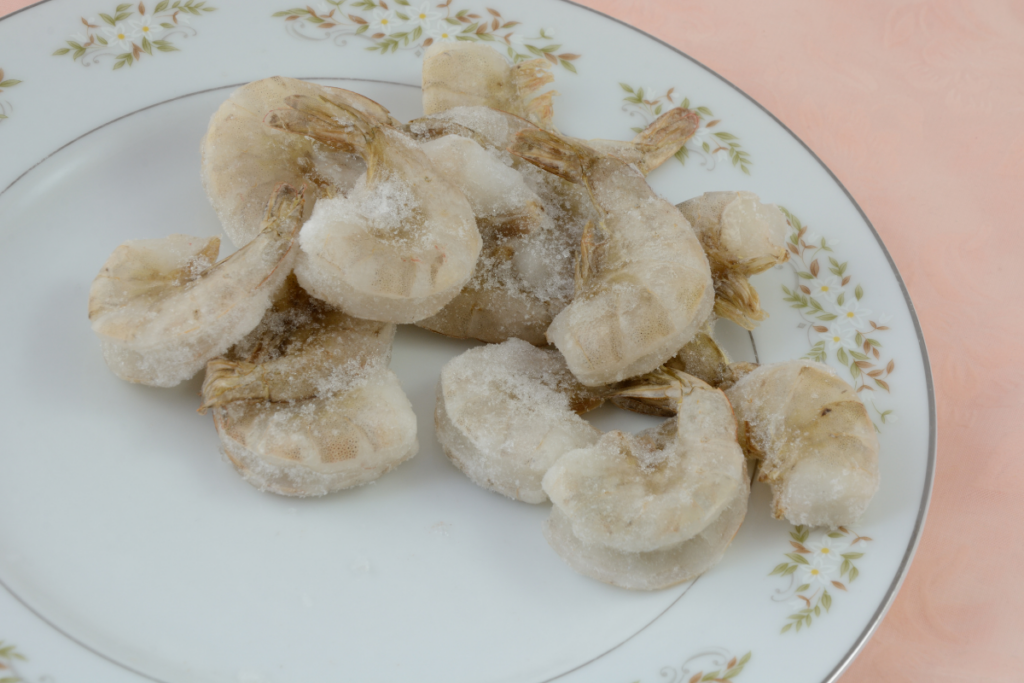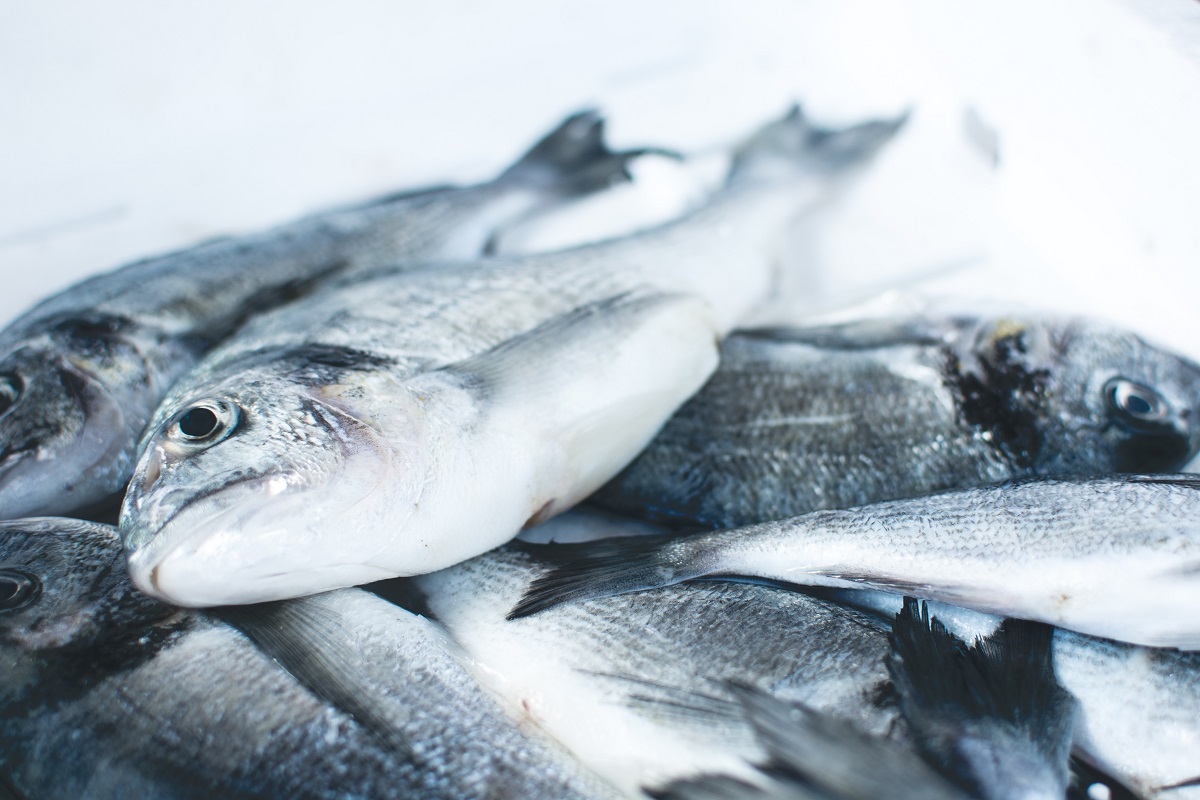Many people would ask, which is the proper thawing procedure for frozen food?
It is important to thaw food properly to avoid the risk of bacterial growth and foodborne illness.
There are several methods of thawing frozen food and choosing the right one depends on the type of food, the time available, and the cooking method.
One of the most common methods of thawing frozen food is to leave it in the refrigerator overnight.
This method is safe and easy, but it requires planning ahead as it can take several hours or even a day for larger items like turkeys.
Another method is to thaw food in cold water, which is faster than thawing in the refrigerator but requires more attention as the water needs to be changed every 30 minutes.
Thawing in the microwave is also an option, but it should be done carefully to avoid partially cooking the food.
Finally, some foods can be cooked directly from frozen, such as vegetables and fish fillets, but it is important to follow the cooking instructions carefully to ensure they are fully cooked.

Which Is The Proper Thawing Procedure For Frozen Food?
When it comes to thawing frozen food, there are three safe methods to choose from: refrigerator thawing, cold water thawing, and microwave thawing.
Each method has its own advantages and disadvantages, so it’s important to choose the right one for your needs.
Refrigerator Thawing
Refrigerator thawing is the easiest and safest method for thawing frozen food.
Simply place the frozen food in the refrigerator and let it thaw slowly.
This method is ideal for items that require gentle thawing, such as meat, poultry, and seafood.
It’s important to plan ahead when using this method since it can take several hours or even days for larger items to thaw completely.
However, the advantage of refrigerator thawing is that it maintains a safe temperature of 40°F or below, which helps prevent bacteria growth.
Cold Water Thawing
Cold water thawing is a faster method for thawing frozen food, but it requires a bit more effort.
To use this method, place the frozen food in a leak-proof plastic bag and submerge it in cold water.
Change the water every 30 minutes to ensure that it stays cold.
This method is ideal for items that need to be thawed quickly, such as vegetables, fruits, and bread.
However, it’s important to note that foods thawed using this method should be cooked immediately after thawing to prevent bacteria growth.
Microwave Thawing
Microwave thawing is the fastest method for thawing frozen food, but it can also be the riskiest.
To use this method, place the frozen food in a microwave-safe container and follow your microwave’s instructions for defrosting.
This method is ideal for small items that need to be thawed quickly, such as frozen dinners or leftovers.
However, it’s important to be careful when using this method since some parts of the food may start to cook during the defrosting process, which can lead to uneven cooking.
In conclusion, choosing the proper thawing procedure for frozen food depends on the type of food you’re thawing, how quickly you need it to thaw, and how much effort you’re willing to put in.
By following the safe thawing methods outlined above, you can ensure that your food is thawed properly and ready to cook.
Importance of Proper Thawing
Thawing frozen food is an essential step in the cooking process.

Proper thawing is critical to ensure that the food is safe to eat and maintains its quality.
In this section, we will discuss the importance of properly thawing the food safety concerns and preserving food quality.
Food Safety Concerns
Thawing frozen food at room temperature is not safe.
Bacteria can grow rapidly in the temperature danger zone (40°F to 140°F), which can cause foodborne illness.
Therefore, it is essential to thaw frozen food in a safe manner to prevent the growth of harmful bacteria.
According to the USDA, the safest way to thaw frozen food is in the refrigerator at 41°F or below.
This method may take a longer time, but it is the most effective way to prevent bacterial growth.
Alternatively, you can thaw frozen food in cold water or in the microwave.
However, it is important to monitor the food’s temperature to ensure that it does not enter the temperature danger zone.
Preserving Food Quality
Proper thawing also helps maintain the quality of the food.
When frozen food is thawed at room temperature, the texture and flavor of the food can be affected.
For example, meat can become mushy, and vegetables can become soft and lose their crispness.
Thawing frozen food in the refrigerator is the best way to preserve the quality of the food.
It allows the food to thaw slowly and evenly, which helps to maintain its texture and flavor.
Additionally, thawing frozen food in the refrigerator can help prevent moisture loss, which can occur when food is thawed at room temperature.
In conclusion, proper thawing is critical to ensure that frozen food is safe to eat and maintains its quality.
Thawing frozen food in the refrigerator is the safest and most effective way to prevent bacterial growth and preserve the quality of the food.
Common Mistakes To Avoid
Thawing frozen food is a crucial step in food preparation.
However, it is easy to make mistakes that can lead to foodborne illness.
Here are some common mistakes to avoid when thawing frozen food:
Leaving Food At Room Temperature
Leaving frozen food at room temperature is one of the most common mistakes people make when thawing food.
This can allow harmful bacteria to grow and cause food poisoning. Instead, thaw food in the refrigerator, microwave, or as part of the cooking process.

Using Hot Water To Thaw Food
Thawing food in hot water is not recommended as it can cause the outer layers of the food to reach a temperature that promotes bacterial growth.
This method can also lead to uneven thawing. Instead, use cold water or the refrigerator.
Thawing Food In The Microwave Without Monitoring It
Thawing food in the microwave is a quick method, but it must be done carefully.
If the food is not monitored, it can start to cook in some areas, while other parts remain frozen.
This can lead to uneven cooking and the growth of harmful bacteria.
Not Following The FIFO Method
The FIFO (first in, first out) method is important for food safety.
It involves using the oldest food items first and placing newer items at the back of the freezer or refrigerator.
This ensures that food items do not stay in the freezer for too long, which can lead to freezer burn or spoilage.
Thawing Food On The counter
Thawing food on the counter is not recommended as it can lead to bacterial growth.
Instead, thaw food in the refrigerator, microwave, or as part of the cooking process.
By avoiding these common mistakes, you can ensure that your food is safe to eat and reduce the risk of foodborne illness.
Key Takeaways
Thawing frozen food properly is an essential step in food safety.
Here are the key takeaways to ensure that your food is thawed safely:
- Use the refrigerator for slow and safe thawing.
- This method is the easiest and safest way to thaw food.
- Simply transfer the frozen food from the freezer to the refrigerator and wait for it to thaw out.
- It may take a day or two, but it ensures that the food remains at a safe temperature while thawing.
- If you need to thaw food quickly, use the cold water method.
- Place the frozen food in a sealed plastic bag and submerge it in cold water.
- Change the water every 30 minutes to maintain a safe temperature.
- This method is faster than the refrigerator, but it requires constant attention.
- Never thaw food at room temperature or in hot water.
- These methods can cause the food to enter the danger zone, where bacteria can grow rapidly.
- Use the microwave for small portions of food only.
- If you need to thaw a small amount of food quickly, the microwave is a safe option.
- Use the defrost setting and follow the manufacturer’s instructions carefully.
- Be sure to cook the food immediately after thawing.
- Plan ahead and thaw food in advance.
- Thawing food in advance allows for the safest and most even defrosting.
- This method is especially important for larger items like turkeys or roasts.
By following these key takeaways, you can ensure that your food is thawed safely and ready for cooking.
Remember to always prioritize food safety and take the necessary precautions to prevent foodborne illness.
